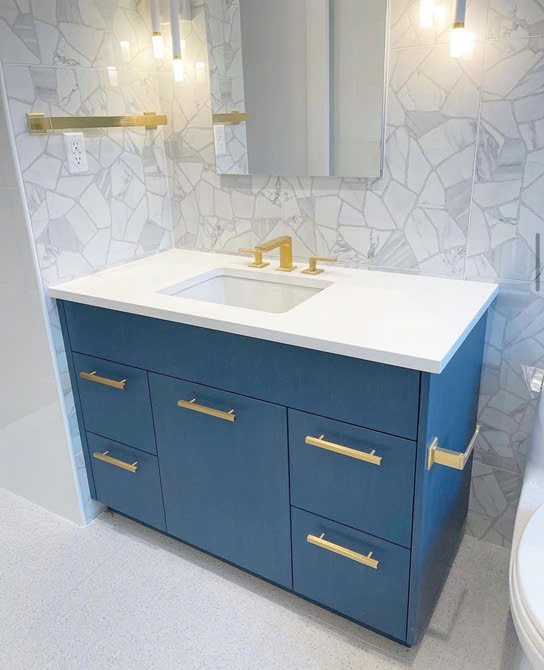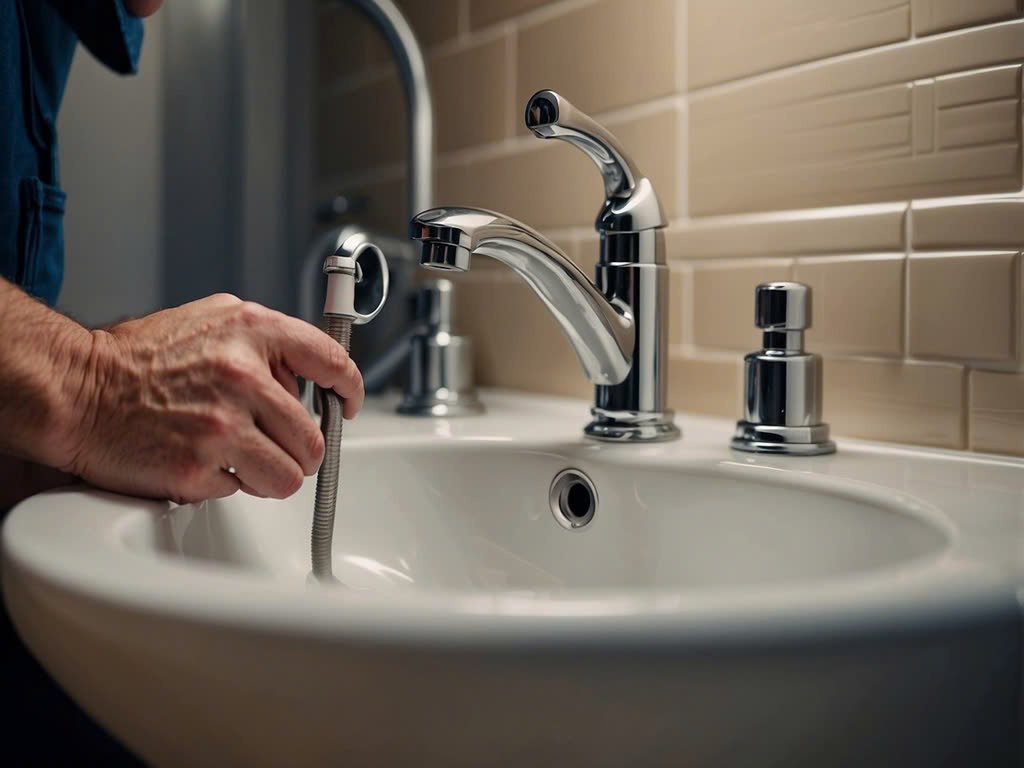Vanity Basin Types Explained: A Guide to Elevating Your Bathroom
Explore different vanity basin types with this guide, helping you choose the perfect style to elevate your bathroom’s design and functionality.
Selecting the finishes and fixtures for a new bathroom design involves many decisions. One significant consideration is your choice of basin, as it affects both the height and overall appearance of the vanity. For this reason, it's wise to choose your basin before settling on a vanity design.
If you're unsure which option is best for your bathroom, here's a guide to the different types of bathroom basins available, along with their pros and cons.
Undermount Basins
Undermount basins are attached to the underside of the benchtop, secured with glue, and sealed with silicone around the edges. Because of this installation method, they are only suitable for stone or solid surface benchtops, not for laminate or wood.
Since these types of vanity basins are installed beneath the benchtop, they do take up some space inside the vanity, which should be considered when planning the layout. Despite this, undermount basins provide a sleek, minimal, and modern look, allowing other elements of the bathroom to stand out.
Above Mount Basins
Above-mount basins are installed on top of the countertop, meaning they do not take up any space inside the vanity and can be placed on any type of benchtop material. Since they are more noticeable than undermount basins, above-mount basins can serve as a focal point in the room. As a result, they are available in a wider variety of shapes, colours, sizes, materials, and textures. Some popular choices include concrete basins, natural stone basins, or basins with ribbed or textured exteriors. The main disadvantage of this type of sink is that, depending on its shape, cleaning around it can be more challenging.
Semi-Inset Basins
Semi-inset basins combine the characteristics of both undermount and above-mount styles, with the basin positioned partly below and partly above the benchtop. This makes them suitable for any benchtop material. They offer a more subtle look than above-mount basins and also take up less space within the vanity compared to undermount basins.
Semi-Recessed Basins
Semi-recessed basins resemble semi-inset basins but extend over the front edge of the vanity. Since only the back half of the basin needs to be within the vanity, these basins are ideal for smaller bathrooms where a traditional 500mm deep vanity isn't a convenient option. This design not only saves space but also provides a modern, streamlined look.
Pedestal Basins
A pedestal basin does not require a vanity for installation. It features a basin paired with a floor stand, typically matching in style and finish. While these basins can sometimes feel a bit outdated, there are now many beautiful modern designs available in a variety of colours and finishes. Pedestal basins are an excellent choice for small bathrooms or powder rooms where space is limited, and a vanity isn't an option.
Wall-Mounted Basins
Wall-mounted basins are similar to pedestal basins but without the stand—they are installed directly onto the wall. Due to this installation method, these basins take up very little space, making them ideal for very small bathrooms and powder rooms. These basins are available in various sizes, shapes, colours, and finishes, giving you plenty of options to choose from. Keep in mind that if you opt for a wall-mounted basin, you will also need a bottle trap. This is installed beneath the basin to replace the standard waste piping and provide a cleaner, more streamlined look. Bottle traps come in different finishes to match your tapware.
What Else You Should Consider?
Apart from the various types, washbasins are also available in a range of shapes, materials, and colours. When choosing a basin, it's important to consider how these elements will fit into your overall bathroom design.
What Is the Best Bathroom Basin Shape?
Round
Round basins are a timeless option for any bathroom design. Their simple geometric form can help create a striking effect. They are perfect for bathrooms with a softer, more natural aesthetic or to provide a contrast against sharp, angular decor.
Square or Rectangular
If you're after a less natural design, consider using rectangular sinks with crisp lines to achieve architectural flair. Featuring simple elegance, these sinks are available in many gorgeous styles to match baths, mirrors, and toilets, allowing you to truly bring your aesthetic together.
Many models include softly curved corners to prevent a harsh look, yet provide plenty of space for everyday use. The clean, modern look of these basins makes them ideal to promote a sense of order and tidiness for modern bathrooms.
Oval
These basins offer a balance between the gentle curves of round designs with the structured appearance of square ones, providing versatility in style. An oval basin sitting above the counter exudes modern luxury with its sleek, minimalist look, creating a subtle yet impactful statement. Paired with a minimalistic design and neutral colours, these basins can bring a spa-like atmosphere to your bathroom's overall aesthetic.
How to Choose Bathroom Sink Colour?
Several bathroom sink colours complement almost any bathroom decor. These colours are primarily white, black, and grey, though other neutral tones can also be used. For example, a sink in a silver or gold hue may not work in every bathroom design, but when combined with the right colour scheme and style, it can become a stunning focal point.
There are, however, some colours that are best avoided regardless of your bathroom's design. Mustard yellow, neon or flashy colours, and dull dark greens are some great examples. Sinks in these colours typically don't blend well with most design schemes. These hues can certainly work in other areas of your bathroom, but because a bathroom sink is such a prominent feature, you want to ensure it complements the rest of your colour palette.
What Is the Best Material for Bathroom Sinks?
The material the sink is made of can affect its durability, maintenance and style.
Porcelain and ceramic sinks are classic pieces of bathroom design. They are popular due to their stylish and neat appearance, stain and scratch resistance, ease of cleaning, and reasonable pricing. The variety of hues and styles available makes it simple to choose one that complements your bathroom's decor.
Another material that is gaining the attention of many lately is resin stone. These sinks, composed of resin and real stone particles, provide a unique combination of aesthetics and practicality. The combination of these materials results in a durable surface that can sustain regular use without chipping or splitting. Resin stone sinks are available in a variety of hues and textures simulating the appearance of actual stone. This allows for seamless incorporation into a variety of bathroom styles, including modern and traditional.
Other popular options include stainless steel and glass. Stainless steel is incredibly durable and resistant to chipping, cracking, and discolouration. They're especially suitable for contemporary and industrial-style bathrooms. Glass sinks are visually appealing and unique, adding a touch of sophistication and class to any bathroom.

























